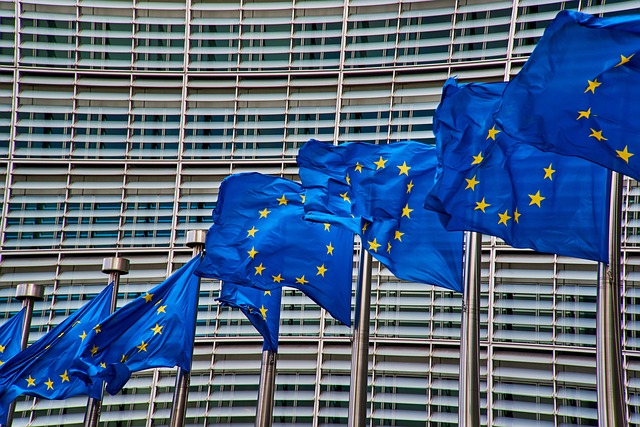In 2025, the European Union is accelerating its efforts to build sustainable infrastructure that aligns with both climate goals and economic growth. As the EU continues its journey toward carbon neutrality, infrastructure development plays a central role in achieving these ambitious targets.
The EU’s Vision for Sustainable Infrastructure
The EU’s commitment to sustainable infrastructure is embedded in its broader climate and energy goals, particularly the European Green Deal. The Green Deal sets a target of carbon neutrality by 2050, and achieving this vision requires a substantial overhaul of the region’s infrastructure.
EU member states are focusing on integrating renewable energy, improving energy efficiency, enhancing transport systems, and modernizing cities to become more resilient to climate impacts.
Building infrastructure that reduces emissions while increasing efficiency and sustainability is essential for both the EU’s environmental and economic goals. However, such an extensive transformation requires massive investments, cross-sector collaboration, and the use of innovative financial mechanisms.
Key Areas for Infrastructure Investment
To create a sustainable future, investments must be made in several key areas. These include energy systems, transportation, smart cities, and water and waste management. Let’s look at these areas in more detail:
- Energy Infrastructure: The transition to renewable energy sources, such as wind, solar, and hydrogen, demands new grids, energy storage, and smart meters. Europe needs investments in a decentralized energy grid to facilitate the integration of these renewable sources while ensuring reliability and security of supply.
- Transportation Systems: Sustainable mobility is a priority for the EU in 2025. The shift from fossil fuel-based vehicles to electric cars, buses, and trains is a major part of the strategy. To support this transition, the EU is investing in charging infrastructure, zero-emission public transport, and electric vehicle production facilities.
- Smart Cities: Smart cities are becoming a vital component of the EU’s sustainable infrastructure. Investments in digital technologies, data-driven solutions, and energy-efficient buildings will help cities reduce their carbon footprints while improving the quality of life for their residents.
Financing Sustainable Infrastructure: Challenges and Opportunities
Building sustainable infrastructure at scale requires substantial financing. According to the European Investment Bank (EIB), it will take more than €350 billion annually over the next decade to meet the EU’s green infrastructure needs. This presents both a challenge and an opportunity for the EU to diversify its funding mechanisms.
Traditional vs. Innovative Financing Models
Traditionally, large infrastructure projects were financed by government spending or private-sector investments. While these methods are still relevant, the urgency of meeting climate targets in 2025 requires more innovative approaches.
Public-private partnerships (PPPs), green bonds, and sustainable investment funds are gaining traction as viable mechanisms for financing sustainable infrastructure.
Green bonds have emerged as a powerful tool for raising capital for environmentally focused projects. These bonds allow investors to fund projects that directly contribute to sustainability goals, such as renewable energy, energy efficiency, and climate-resilient infrastructure.
Leveraging EU Funding and Support
The EU has already introduced a variety of funding mechanisms to support green infrastructure projects. The NextGenerationEU recovery plan continues to provide financial support for member states, with a particular focus on digital and green investments.
Additionally, EU programs such as Horizon Europe and the European Investment Bank (EIB) have expanded their funding portfolios to prioritize projects that contribute to the EU’s climate and sustainability objectives.
While these financial mechanisms are crucial, they are not enough on their own. Member states must also ensure that national policies align with the EU’s sustainability goals to create an enabling environment for sustainable infrastructure projects.
Strategic Actions for Building Sustainable Infrastructure
Several strategic actions must be taken to finance and build sustainable infrastructure effectively. These actions will help optimise the investments’ impact and ensure that projects are delivered on time and within budget.
Key strategies include:
- Accelerating Project Approval Processes: Streamlining planning and permitting processes to reduce the time it takes to get projects off the ground.
- Promoting Private Sector Participation: Encouraging private investment through incentives and partnerships with public institutions.
- Ensuring Equity in Access: Ensuring that all regions, especially those most vulnerable to climate change, have access to sustainable infrastructure.
- Prioritizing Long-Term Sustainability: Focusing on projects that offer long-term environmental, social, and economic benefits.
Conclusion: A Sustainable Future for All
The EU faces a pivotal moment in the race toward sustainability. By building and financing infrastructure that supports a green and resilient economy, Europe can lead the way in creating a sustainable future for all.
The need for innovative financing, strategic investment, and policy alignment is more critical than ever. While the challenges are significant, the opportunities to build a sustainable, low-carbon future are within reach.

